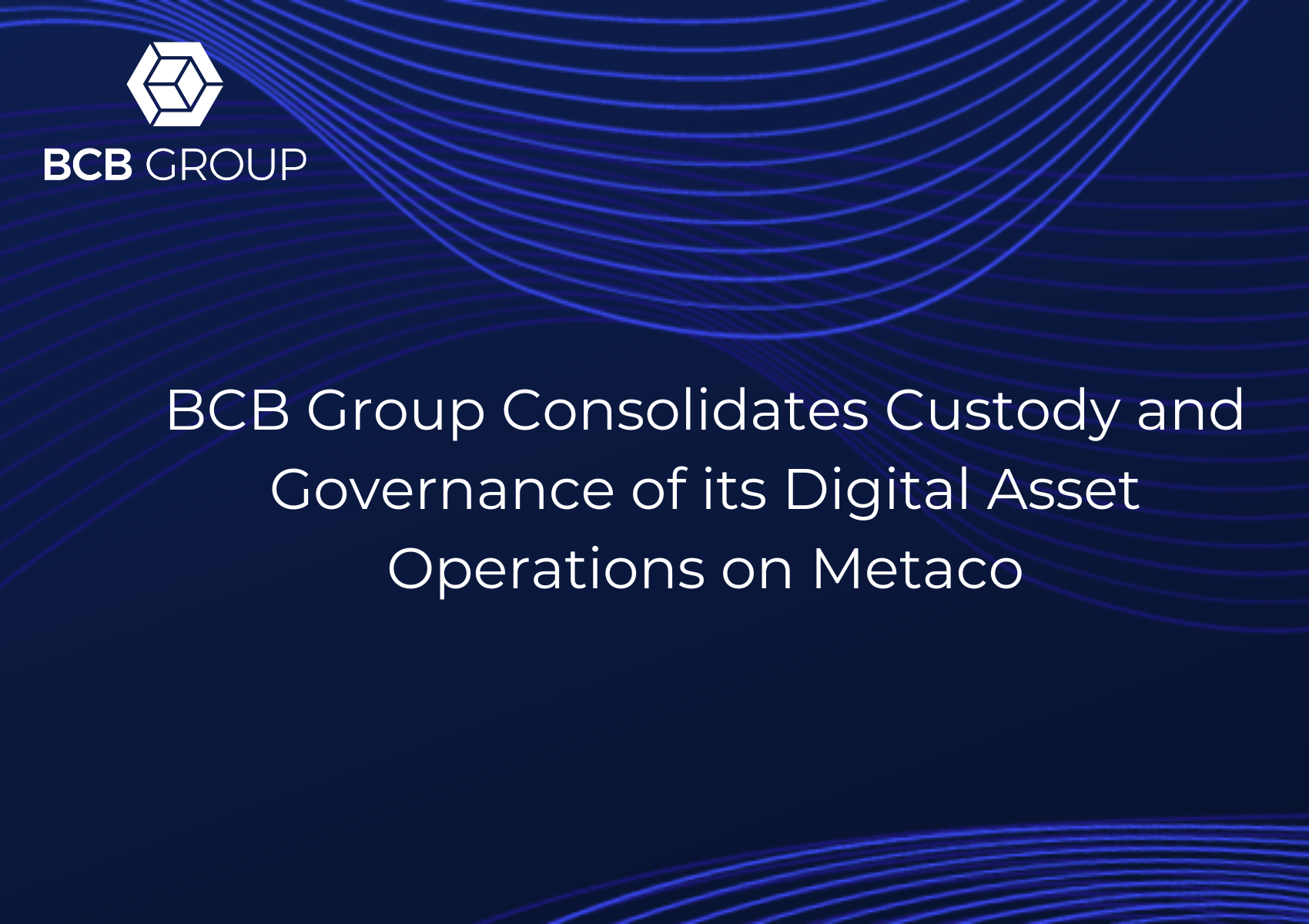Guest Blog: A Primer on Stablecoins
WHAT ARE THEY, WHAT ARE THEY USED FOR, ARE THEY SAFE, AND WHAT ARE THE REGULATORY CONSIDERATIONS AROUND THEM?
If you or your firm are active in cryptocurrency or digital asset markets, then chances are high that you’ve used stablecoins, even if you may not be familiar with the term. While stablecoins are integral to the smooth functioning of these markets, their uses and applications extend far beyond them and increasingly into the world of traditional financial markets and payments infrastructure as well. In this primer, we’ll take a look at stablecoins, their structures, uses, key considerations and challenges for users, and the way in which they are regulated.
WHAT IS A STABLECOIN?
A stablecoin is a digital token with a value that stays close to specific reference, normally a fiat currency or a basket of fiat currencies. There are several methods to achieve the stability of value of the stablecoins that range from backing the tokens with an equal amount of fiat money or assets, to sophisticated algorithms run by computers and smart contracts. Facebook’s original proposal for its Libra stablecoin, for example, envisaged it as being backed by a basket of currencies and short-term assets.
Stablecoins do not necessarily need to be backed by the physical assets whose performance they wish to track. Like exchange-traded funds (ETFs), they can be synthetically backed as well. These are known as algorithmic stablecoins. Some algorithmic stablecoins aim to maintain a value that is pegged to another asset through holding a basket of reserve assets that overall mimic the performance of the pegged asset. However, algorithmic stablecoins do not need to be pegged to any asset; an algorithm (which is a mathematical formula) executed by a computer or a smart contract can be the source of stability behind the stablecoin, operating by adding or subtracting tokens into the market to maintain a stable value.
At this point, you might be wondering what the difference is between a stablecoin and any other digital asset that aims to provide exposure to an underlying asset for investment purposes. The primary use of a stablecoin is as a means of payment or a means of settlement, and it’s this behaviour that drives their treatment from a regulatory perspective as well.
WHAT ARE STABLECOINS USED FOR?
The first stablecoins were introduced for use in settling cryptocurrency transactions on-chain. For investors and traders who don’t want to fully cash out their positions in fiat currency after each crypto transaction, stablecoins such as Tether’s USDT offer a convenient mechanism for effecting both on-chain settlement, and holding USD value, ready to trade crypto again, without converting back and forth between fiat USD.
Stablecoins can also be used as a means of developing more efficient payment systems, especially for cross-border payments. By converting fiat to stablecoins, value can be rapidly moved around blockchain-based payments systems, bypassing traditional payments and banking infrastructure and layers of intermediaries, and enabling faster and cheaper domestic and cross-border payments to be made. This is the premise of Facebook’s Diem (formerly Libra).
From a more institutional perspective, the benefits of issuing and trading digital-native financial instruments such as stocks and bonds (also known as security tokens), are becoming more apparent. These digital securities can be settled instantaneously on the blockchain, without the layers of inefficiency and time delays that exist for traditional paper-based securities. However, without a means of instantaneously delivering and settling the payments leg of the transaction, these benefits cannot be fully realised. Enter stablecoins: to solve this problem, many digital issuance and trading platforms have had to introduce their own stablecoin to effect instantaneous DvP (delivery vs. payment). Fnality’s payments system seeks to address these gaps in the wholesale market, as well as providing a mechanism for more efficient wholesale payments.
ARE STABLECOINS SAFE?
The answer is, sometimes, but definitely not always… At present, a stablecoin user is largely reliant on the guarantee of the stablecoin issuer that the value of their stablecoin will be maintained. In some cases, such as that of Tether, it may later be discovered that the issuer has not been managing the stablecoin in the way expected by or communicated to its users. There is also the question of what happens when the issuer of a stablecoin defaults. What recourse do holders of the stablecoin have? Are they left holding worthless coins? What happens to in-flight transactions for which the stablecoin is being used as a means of payment or settlement? Unless the issuer has put in place legal and other operational arrangements in anticipation of these scenarios, then the stablecoin user faces a degree of counterparty risk from the issuer.
This is an area of growing regulatory focus, with many regulators now identifying certain classes of “systemically important stablecoins” for which the issuer will be subject to a higher degree of oversight, and requirements to hold segregated asset reserves backing the coin. Central banks are also increasingly looking at introducing central bank digital currencies (CBDCs) – digital-native forms of fiat currency that could be used in many of the scenarios occupied by stablecoins today, without the same risks attached.
HOW ARE STABLECOINS REGULATED?
The way in which stablecoins are regulated in different jurisdictions varies depending on how they are structured and operated, and / or how they are used in the markets. Regulators and central banks are now starting to take closer notice of the potential for some stablecoins to become widely used, and potentially systemically important, and developing rules to address the potential for systemic risk to arise as a result. This is driven in no small part by the looming spectre of Facebook’s Diem and its potential to be used on a truly global scale.
Depending on the jurisdiction in which they are issued and used, and on their structures, some stablecoins may be already covered by existing regulation, or by new DLT and virtual asset regulations. In the UK and EU, some stablecoins are already caught by the rules associated with the E-Money and Payment Services Directives. The EU is introducing new rules specifically aimed at stablecoin issuers (and particularly, those issuers deemed to be of systemic importance) as part of MiCA – the Markets in Cryptoassets Regulation – however this won’t enter into force for a couple of years. In the UK, the Treasury has recently consulted on further regulation of stablecoins, and looks set to introduce prudential and conduct requirements for systemically important issuers as well.
WHAT DOES THE FUTURE HOLD FOR STABLECOINS?
With CBDCs emerging as a major contender, do stablecoins have a future? The answer is, most likely, yes. It will be years before CBDCs are widely available in all desired currencies, and able to be used at scale and for the use cases currently filled by stablecoins. And by that time, the place of stablecoins may well be entrenched in certain sectors of the market, particularly for users of currencies such as USD which are likely to be reliant on private stablecoin issuers for some time yet.
Our prediction is that stablecoins are here to stay, and will continue to fill as yet new and undiscovered niches in both crypto and traditional financial markets.
Written by Jannah Patchay

Jannah specialises in financial markets innovation. Across two decades’ experience in the Financial Services sector, she has provided advisory, consulting and delivery services to a wide cross-section of market participants including exchanges, tier-1 investment banks, brokers, funds and start-up businesses.
This includes a range of engagements for clients, including assisting in the launch of new trading venues, businesses, products and services, interpreting and implementing new regulations, and advising on regulatory, business and operational strategy. Her regulatory subject matter expertise lies in financial market structures and applicable regulations, such as Dodd-Frank, EMIR and MiFID / MiFIR, with a particular emphasis on cross-border and extraterritorial issues.
She is a Director and Regulatory Advocacy Ambassador of the London Blockchain Foundation, driving the regulatory agenda and leading regulatory consultation responses and advocacy with respect to the emerging digital assets sector. As a member of the Whitechapel Think Tank’s Future of Payments WG (with representatives from industry, government and academia, and supported by Innovate Finance and the City of London Corporation) she is also involved developing policy recommendations and advocacy around digital money and its potential for advancing financial inclusion and payments innovation. Jannah covers financial innovation topics as a freelance journalist.
Jointly Published with Twenty84 Solutions

Twenty84 is a specialist financial recruitment firm providing retained, permanent and contract resourcing services across risk, compliance, financial crime and regulatory change in the cryptocurrency, digital assets, fintech, and regtech sectors.
Twenty84 is a fellow member of CryptoUK, the self-regulatory trade association for the UK cryptoasset industry, established to promote higher standards of conduct.


